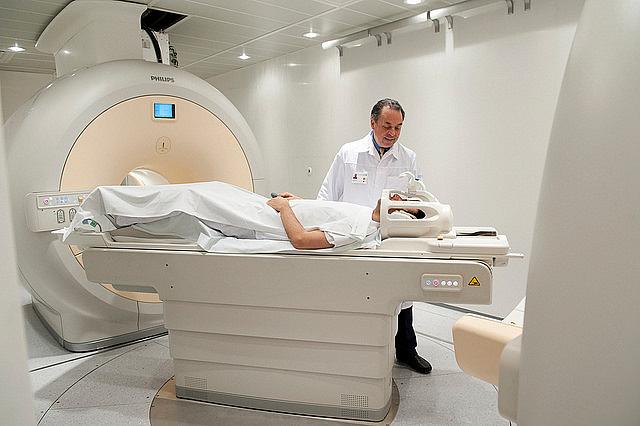As company shifts to high-deductible plans, habits and savings change

High-deductibles may make some patients more likely to forego expensive tests.
With more and more companies moving to high-deductible health plans, researchers are trying to understand the impact of such plans on patients’ use of services and health spending.
“This kind of trend — moving to high-deductible plans — is a very common trend in the large employer space,” said Ben Handel, an assistant economics professor at University of California, Berkeley. “A big motivation is trying to control health costs.”
Concerns over growing health costs and the Affordable Care Act’s excise tax on high-cost or “Cadillac” health plans are spurring more employers to seek strategies for lowering costs and avoiding that tax, according to the consulting firm Towers Watson.
Handel and his team are working on a real-world case study that is illuminating the effects of high-deductible plans on one large company and its employees. The firm, which employs about 50,000 people, recently switched from a health plan that was free for employees to a high-deductible plan.
Through 2012, the vast majority of employees were enrolled in a generous plan that involved no out-of-pocket pay. But, in 2013, they switched those same employees to a plan with a high-deductible: about $4,000 for a family, as well as co-insurance pays for visits. To help ease the burden, they placed $4,000 in a health savings account (HSA), which employees could use or carry over to the next year.
The initial findings were significant: The company’s total health care spending dropped 17 percent, amounting to about $125 million for the year studied.
Researchers also wanted to learn more about the nuances behind the spending drop. Were employees now price shopping and switching to less-expensive providers? It turns out they were not; the cost savings largely came through a decrease in overall visits and procedures.
For example, that could mean that if a patient was offered a service such as a magnetic resonance imaging (MRI) that wasn’t completely necessary, they might decline since they’d be shouldering the test’s cost.
“Before, they may have thought, ‘Let’s do it, it’s free,’” Handel said. Afterward, the decision might have gone like: “Well, that’s going to cost me $500.”
The total quantity of medical services went down by about 20 percent, though researchers aren’t sure yet of the precise breakdown. They do know, though, that preventative visits declined by 14 percent even though they are free under these plans.
That could be because participants were seeing a doctor less overall, so there were fewer reminders for preventative services, Handel said. Or people might not have been aware those visits were completely covered.
The study also zoomed in on the sickest consumers — which make up the top quartile in terms of overall spending — to see how the shift to a high-deductible affected their habits. They, too, reduced their health utilization, even though most ended up reaching the deductible and having services covered.
“We thought it would be unlikely they’d be reducing” the amount of care sought out, Handel said. “But they are. So we looked at when they’re reducing it.”
It turned out that high utilizers cut their visits and services at the beginning of the year, when the deductible wasn’t yet reached and the cost burden was entirely on them. As they surpassed that limit, their habits changed.
“That’s interesting because they should be able to predict that they will reach it,” Handel said. “But people are looking at the price you pay on the spot, rather than the true price. It’s interesting from the psychology perspective.”
Handel cautioned that the working paper — it will be released in several weeks and available here — is a good examination of what happens one year after a switch; it’s not a longitudinal study. That could be particularly relevant when it comes to price shopping. Even though they found the consumers studied did not change providers to save costs, they could become more price-conscious medical shoppers as time goes on.
Companies are also looking to help consumers with price-shopping. By 2016, Towers Watson projects that 43 percent of employers will provide price and quality transparency tools to help employees make better health-related consumer choices. They also estimate that almost three-fourths of companies surveyed will offer a high-deductible plan as an option for 2015, jumping up 63 percent from 2014. An estimated 23 percent of those companies will have it as the only option.
Earlier studies have also found that health spending dropped for families enrolled in high-deductible plans with at least a $1,000 deductible.
Photo by NRC via Flickr.

